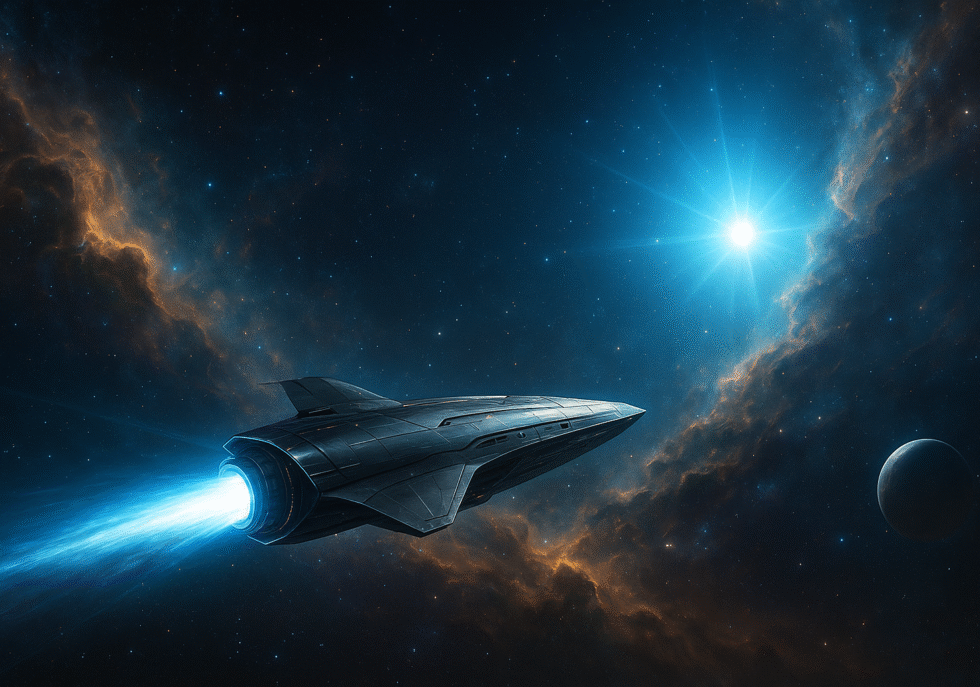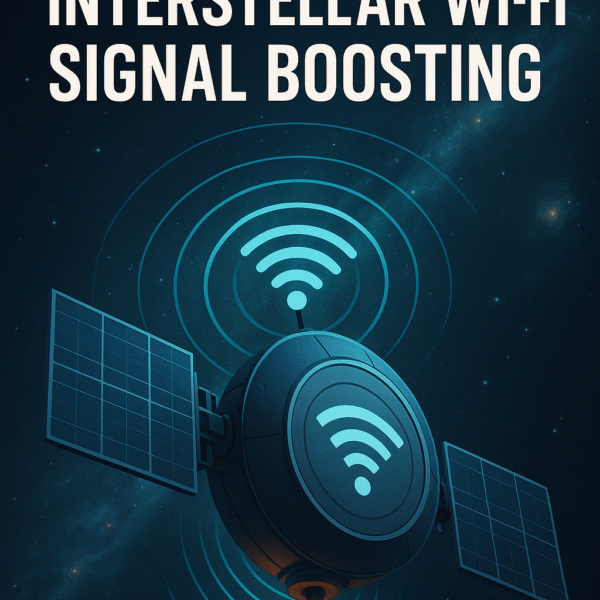- June 13, 2025
- 0 Comments
Gazing at the night sky has always stirred dreams of venturing beyond our solar system. Yet interstellar travel remains one of humanity’s greatest technological frontiers, demanding breakthroughs that eclipse every engineering triumph to date. From fusion propulsion that can slash journey times to self‑sustaining habitats that protect fragile bodies and minds, each challenge is a mountain all its own. Below, we unpack what peer‑reviewed research and space‑agency road maps say we must invent—or perfect—before the first star‑bound craft ever leaves the heliosphere.
Pro‑Tip for New Readers: Bookmark our Spacefrontier Hub for weekly deep‑dive updates on tomorrow’s technology.
Revolutionizing Propulsion: Faster, Farther, Smarter
Keywords: fusion rockets, laser sails, ion thrusters, warp drive research
Chemical rockets carry us to orbit, but their specific impulse is far too low for true deep‑space flight. To cross 4.3 light‑years to Alpha Centauri in anything less than millennia, we need orders‑of‑magnitude gains in speed and efficiency.
- Compact Fusion Drives – Pulse‑fusion concepts such as Princeton Field‑Reversed Configurations and Helion’s magneto‑inertial approach could reach 10–20 % c (≈30,000–60,000 km s⁻¹). Recent simulations show that a deuterium‑helium‑3 fuel cycle minimizes neutron flux—and therefore shielding mass—making a crewed fusion ship marginally plausible (NASA Advanced Concepts Office, 2022).
- Beamed Sailcraft – Breakthrough Starshot proposes wafer‑scale “StarChips” pushed by a 100 GW ground‑based laser array to 0.2 c within minutes. Although uncrewed, the program is pioneering ablative‑coating research and phased‑array optics that could scale to larger, human‑rated light‑sails (Loeb & Manchester, Astrophysical Journal 2023).
- High‑Power Ion & Hall Thrusters – NASA’s NEXT‑C engine delivered record‑setting efficiency. Road maps envision 200 kW solar‑electric stages for cargo tugs and, eventually, multi‑megawatt nuclear‑electric drives for colony arks (JPL Propulsion Report 2021).
- Alcubierre‑Class Warp Metrics – While negative‑energy densities once seemed fantastical, White et al. (2021) replaced exotic matter with nested Casimir cavities, shrinking the power need to planet scale. Warp physics remains speculative but increasingly quantified.
Takeaway: Compact fusion and high‑intensity beamed propulsion appear to be our first realistic steps, with warp physics reserved for the far horizon.
Protecting Human Life: Body, Mind & Genes
Keywords: artificial gravity, space radiation shielding, genetic engineering astronauts, space psychology
Voyages lasting years subject crews to hazards that no generation of astronauts has yet faced continuously.
- Artificial Gravity – Rotating habitats with ~150 m radii spinning at 3 rpm could provide 1 g while minimizing Coriolis sickness (ESA Artificial‑Gravity Workshop, 2019).
- Radiation Shielding – Galactic cosmic rays (GCRs) deliver ~0.66 Sv yr⁻¹ unshielded at 1 AU. Strategies include 5 g cm⁻² polyethylene layers, superconducting 5 T toroidal magnets, and “Water Walls” doubling as consumables (NASA HRP Storm‑Shelter Study, 2023).
- Genetic & Pharmacologic Hardening – CRISPR insertion of tardigrade Dsup protein cut radiation‑induced DNA breaks by 40 % in human cell lines (JHU Applied Physics Lab, 2024).
- Induced Torpor – Hydrogen‑sulfide hypothermia reduced metabolism by 60 % in swine (Mayo Clinic Hypothermia Lab). ESA’s Hibernation for Mars envisions five‑fold life‑support mass reductions.
- Psychological Safeguards – The Mars‑500 isolation study highlighted VR “nature rooms,” tele‑therapy, and AI companions as critical countermeasures (Smith & Lee, Journal of Aerospace Psychology 2022).
Sustainable Life‑Support Systems: Recycling for Survival
Keywords: closed‑loop life support, bioregenerative systems, space farming, 3‑D printing waste
A true interstellar craft must function as a closed ecological life‑support system (CELSS).
- Bioregenerative Loops – Spirulina bioreactors with hydroponic crops refreshed 100 % O₂ and captured CO₂ at 95 % efficiency in NASA ECLSS Phase III demos (2021).
- Water Recovery – ISS Vapor Compression Distillation currently hits 93 %. Paragon SDE is iterating forward‑osmosis membranes targeting 98 % recovery (2024).
- Waste‑to‑Resource 3‑D Printing – ESA’s MELiSSA converts metabolic waste into PLA filament, enabling on‑demand spare‑part fabrication.
- Food Autonomy – Gene‑edited dwarf wheat lines mature in 50 days under tuned LED spectra; flight validation begins on NASA’s Lunar Gateway in 2028.
Robotics & AI Integration: Autonomous Companions
Keywords: AI spacecraft, autonomous maintenance, space robotics, digital psychologists
- Maintenance Swarms – Micro‑bots inspired by DARPA SHRIMP crawl hulls, repair micrometeoroid scars, and print graphene patches in situ.
- Astrobee to Andromeda – The ISS Astrobee robots showcase free‑flyer autonomy; scaled versions could monitor entire starships.
- Digital Psychologists – GPT‑class companions, trained on crew bios, flag early mood shifts and deliver contextual therapy—demonstrated in analog isolation habitats (CalTech VR Lab 2024).
- Cyber‑Resilience – Quantum‑safe encryption suites like CRYSTALS‑Kyber protect autonomous control stacks from future code‑breaking.
Interstellar Communication: Bridging Cosmic Distances
Keywords: deep‑space laser comms, delay‑tolerant networking, quantum key distribution, data‑mule starships
- Deep‑Space Optical Links – NASA DSOC hit 267 Mb s⁻¹ at 1.2 AU; 1 m apertures could exceed 1 Gb s⁻¹ at 20 AU (2022).
- Delay‑Tolerant Networking (DTN) – Protocol stack RFC 4838 flew on Artemis I Orion.
- Quantum Entanglement Prospects – China’s QUESS/Micius satellite extended entanglement distribution to 1,200 km, paving the way for interstellar‑scale QKD chains.
- Data‑Mule Starships – Swappable probe memory cores could out‑bandwidth photons for the longest hauls—a digital twist on age‑of‑sail mail packets.
Collaboration Across Humanity: The Ultimate Requirement
Keywords: space governance, public‑private partnerships, space finance, cultural diplomacy
- Governance Frameworks – The Artemis Accords hint at future off‑world jurisdictions, but generational‑ship citizenship and gene‑editing ethics remain undefined (Thakur & Anderson, Space Policy 2023).
- Public‑Private Synergy – Heavy‑lift vehicles like SpaceX Starship, Blue Origin New Glenn, and CNSA Long March‑9 illustrate commercial accelerators.
- Distributed Funding – Crowdfunded constellations such as Planet Dove and blockchain‑based space bonds demonstrate multi‑trillion financing beyond single‑nation budgets.
- Cultural Diplomacy – Global VR sky‑watch parties and open‑source mission dashboards can turn a planetary audience into stakeholders, sustaining political will across decades.
Looking Forward
Keywords: future of humanity, alpha centauri mission, cosmic exploration, space inspiration
Every milestone—fusion ignition, torpor protocols, closed‑loop farms—brings Alpha Centauri closer. History shows that once a capability is technically feasible, human curiosity finds a way. The real question is not whether we can breach the interstellar gulf, but when we will choose to marshal the intellect, treasure, and collective courage to do so.
“The stars are far, but they are not forbidden.” — Dr. Nia Wu, ESA Interstellar Taskforce, keynote 30 April 2097.
Are we ready to unite behind a venture that will span generations and redefine what it means to be human among the stars?










